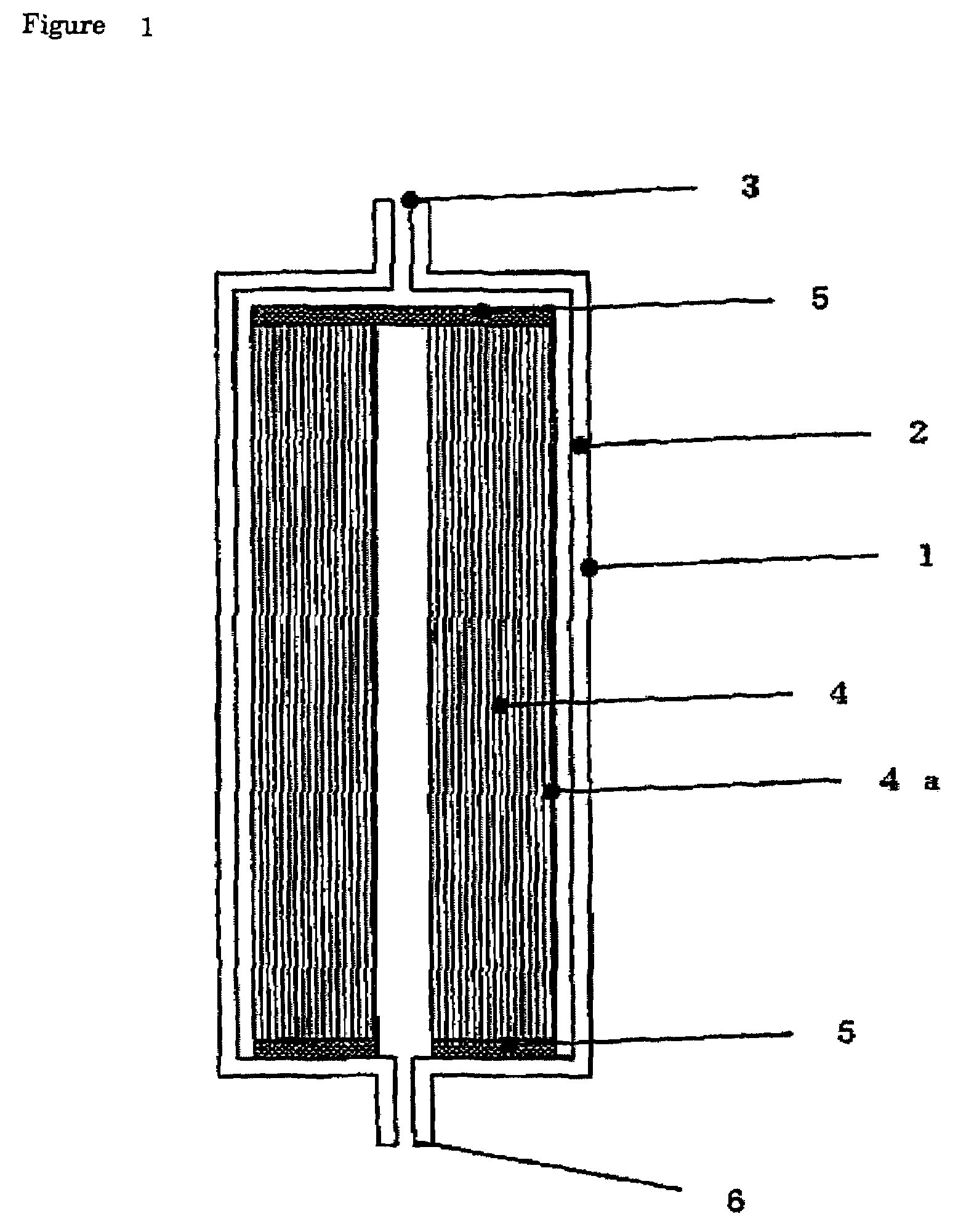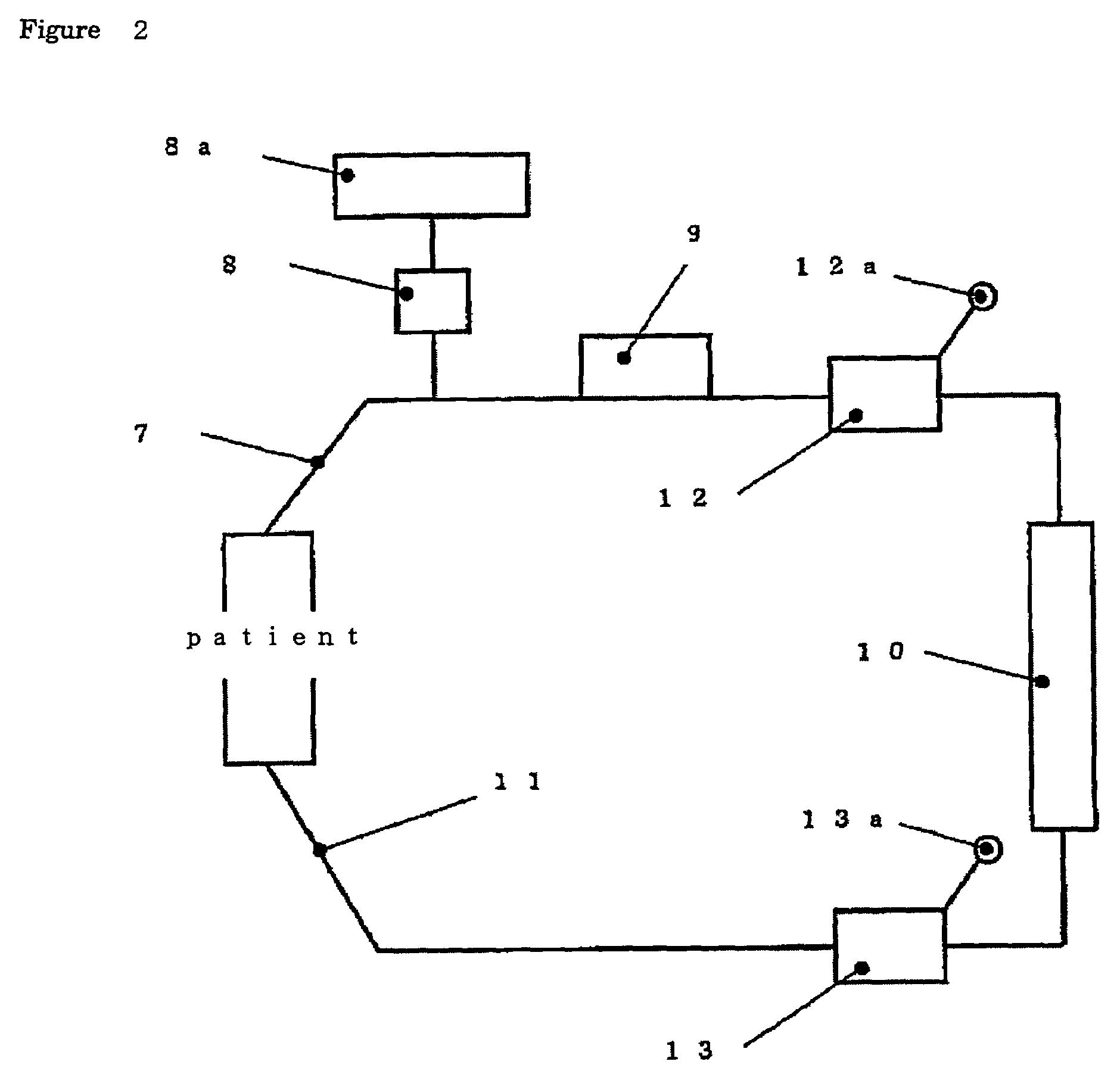Biocompatible polymer and filter for selectively eliminating leucocytes using the same
a biocompatible polymer and filter technology, applied in the field of polymers, can solve the problems of preventing leukocyte adsorption, difficult to achieve a balance between leukocyte removal efficiency and platelet recovery efficiency, side reactions, etc., and achieves excellent biocompatibility, prevents adsorption of platelets, and reduces side reactions
- Summary
- Abstract
- Description
- Claims
- Application Information
AI Technical Summary
Benefits of technology
Problems solved by technology
Method used
Image
Examples
example 1
(Synthesis of Polymer)
[0085]One example of the method of synthesizing the polymer used for preparing a selective leukocyte removal filter by coating will be shown. A reaction vessel equipped with a reflux condenser was charged with ethanol (277 ml). After bubbling nitrogen into ethanol and stirring the mixture at 73° C. for one hour, monomers were added dropwise over 120 minutes while maintaining a nitrogen atmosphere. An initiator solution was added dropwise at the same time over 300 minutes. After completion of the addition of the initiator solution, the monomers were polymerized for further two hours.
[0086]The monomer mixture was a liquid containing 4.8 g (30.0 mmol) of methoxydiethylene glycol methacrylate (MDG), which is a polymerizable monomer having an alkylene oxide chain, 4.3 g (50.0 mmol) of methylmethacrylate (MMA), which is a polymerizable monomer having a hydrophobic group, and 2.7 g (20.0 mmol) of 2-hydroxyisobutyl methacrylate (HBMA), which is a polymerizable monomer ...
example 2
[0092]A polymer was synthesized in the same manner as in Example 1, except for using 40.0 mol % of MDG, 50.0 mol % of MMA, and 10 mol % of HBMA. The composition of the resulting polymer was analyzed from the integral value of NMR measurement, confirming that the composition was almost in agreement with the charged monomer composition. The γ value of the polymer was calculated according to the Fedors method to confirm that the γ value was 10.04. The weight average molecular weight of the polymer measured by GPC was 8.7×105.
[0093]A filter material was prepared from the polymer in the same manner as in Example 1. The δ value of the filter supporting body was 10.30, the average fiber diameter of the filter material was 2.7 μm, the density was 90 g / m2, and the thickness was 0.42 mm.
[0094]Using the obtained filter material, the elution test and the blood performance test were carried out in the same manner as in Example 1. The appearance of the filled solution after sterilization and pres...
example 3
[0095]A polymer was synthesized in the same manner as in Example 1, except for using 20 mol % of MDG, 60 mol % of MMA, and 20 mol % of HBMA. The composition of the resulting polymer was analyzed from the integral value of NMR measurement, confirming that the composition was almost in agreement with the charged monomer composition. The δ value of the polymer was calculated according to the Fedors method to confirm that the δ value was 10.31. The weight average molecular weight of the polymer measured by GPC was 9.2×105.
[0096]1 g of the polymer obtained was dissolved in 100 ml of a mixed solvent of ethanol and purified water (70:30). A nonwoven fabric made from polypropylene was immersed in the solvent. After removing excessive liquid, the nonwoven fabric was dried at room temperature for 16 hours to obtain the target filter. The δ value of the filter supporting body was 7.90, the average fiber diameter of the filter material was 2.6 μm, the density was 80 g / m2, and the thickness was ...
PUM
| Property | Measurement | Unit |
|---|---|---|
| filling density | aaaaa | aaaaa |
| diameter | aaaaa | aaaaa |
| area | aaaaa | aaaaa |
Abstract
Description
Claims
Application Information
 Login to View More
Login to View More - R&D
- Intellectual Property
- Life Sciences
- Materials
- Tech Scout
- Unparalleled Data Quality
- Higher Quality Content
- 60% Fewer Hallucinations
Browse by: Latest US Patents, China's latest patents, Technical Efficacy Thesaurus, Application Domain, Technology Topic, Popular Technical Reports.
© 2025 PatSnap. All rights reserved.Legal|Privacy policy|Modern Slavery Act Transparency Statement|Sitemap|About US| Contact US: help@patsnap.com


